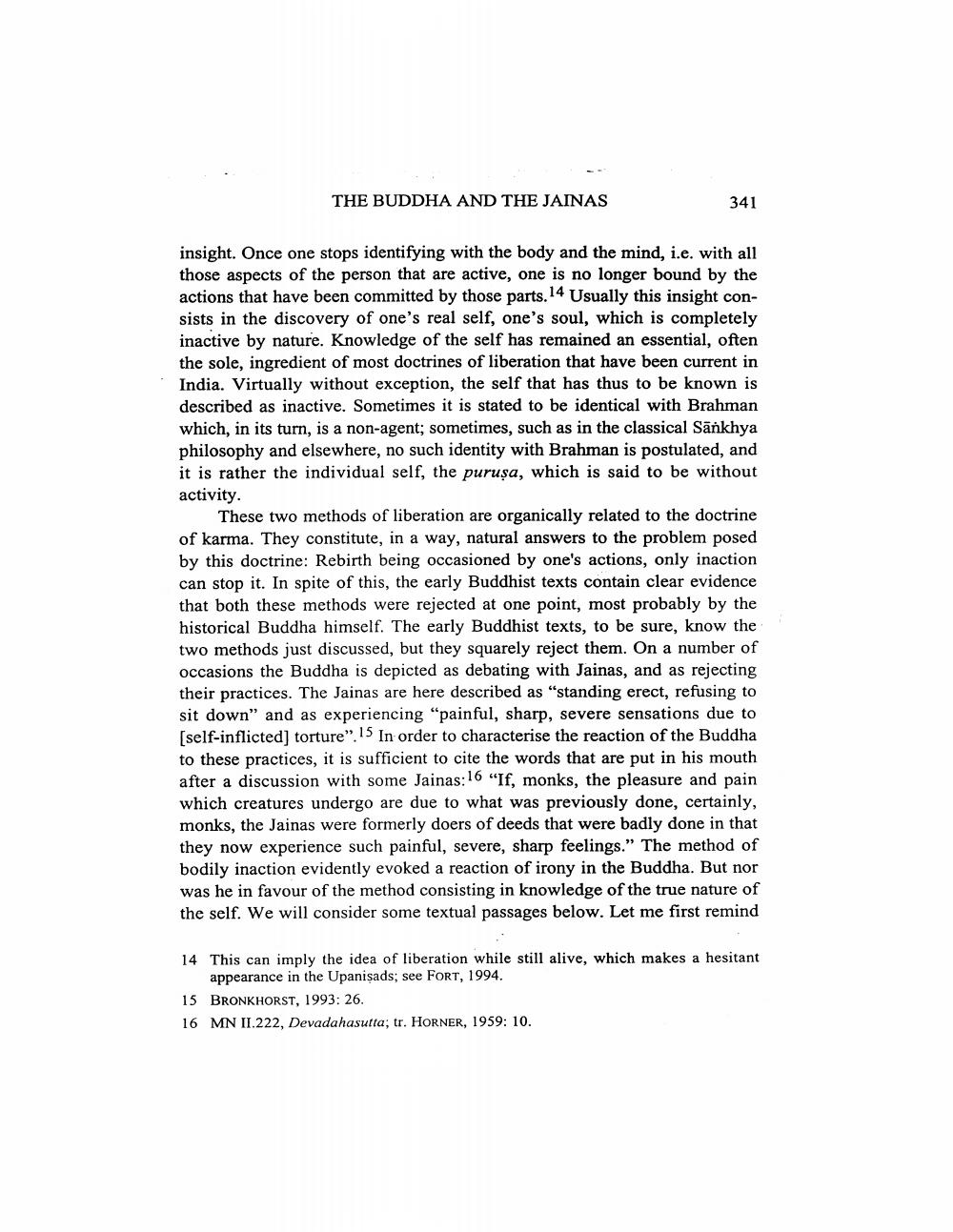________________
THE BUDDHA AND THE JAINAS
341
insight. Once one stops identifying with the body and the mind, i.e. with all those aspects of the person that are active, one is no longer bound by the actions that have been committed by those parts. 14 Usually this insight consists in the discovery of one's real self, one's soul, which is completely inactive by nature. Knowledge of the self has remained an essential, often the sole, ingredient of most doctrines of liberation that have been current in India. Virtually without exception, the self that has thus to be known is described as inactive. Sometimes it is stated to be identical with Brahman which, in its turn, is a non-agent; sometimes, such as in the classical Sānkhya philosophy and elsewhere, no such identity with Brahman is postulated, and it is rather the individual self, the puruşa, which is said to be without activity.
These two methods of liberation are organically related to the doctrine of karma. They constitute, in a way, natural answers to the problem posed by this doctrine: Rebirth being occasioned by one's actions, only inaction can stop it. In spite of this, the early Buddhist texts contain clear evidence that both these methods were rejected at one point, most probably by the historical Buddha himself. The early Buddhist texts, to be sure, know the two methods just discussed, but they squarely reject them. On a number of occasions the Buddha is depicted as debating with Jainas, and as rejecting their practices. The Jainas are here described as "standing erect, refusing to sit down" and as experiencing "painful, sharp, severe sensations due to (self-inflicted] torture":15 In order to characterise the reaction of the Buddha to these practices, it is sufficient to cite the words that are put in his mouth after a discussion with some Jainas:16 "If, monks, the pleasure and pain which creatures undergo are due to what was previously done, certainly, monks, the Jainas were formerly doers of deeds that were badly done in that they now experience such painful, severe, sharp feelings." The method of bodily inaction evidently evoked a reaction of irony in the Buddha. But nor was he in favour of the method consisting in knowledge of the true nature of the self. We will consider some textual passages below. Let me first remind
14 This can imply the idea of liberation while still alive, which makes a hesitant
appearance in the Upanisads; see FORT, 1994. 15 BRONKHORST, 1993: 26. 16 MN II.222, Devadahasutta; tr. HORNER, 1959: 10.




